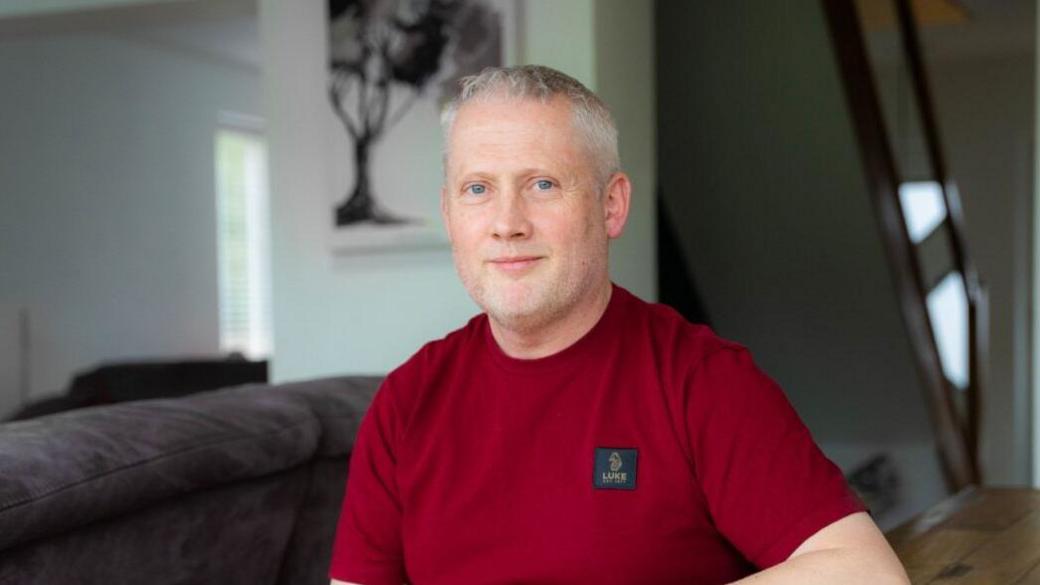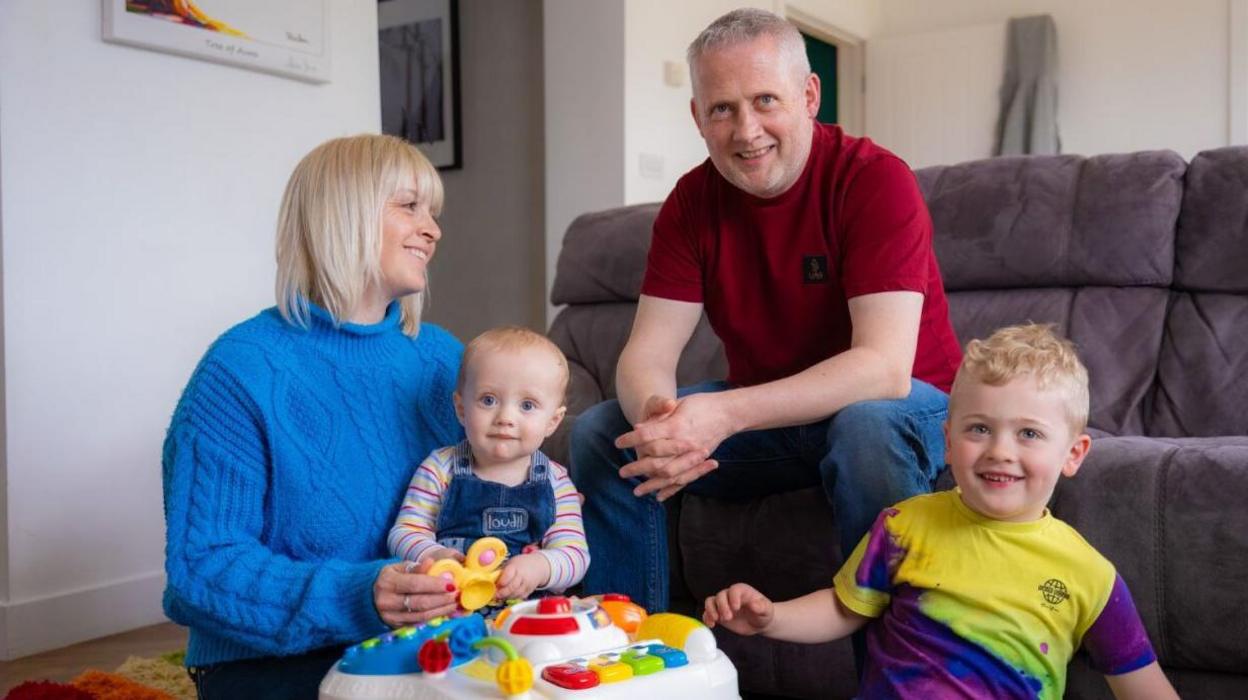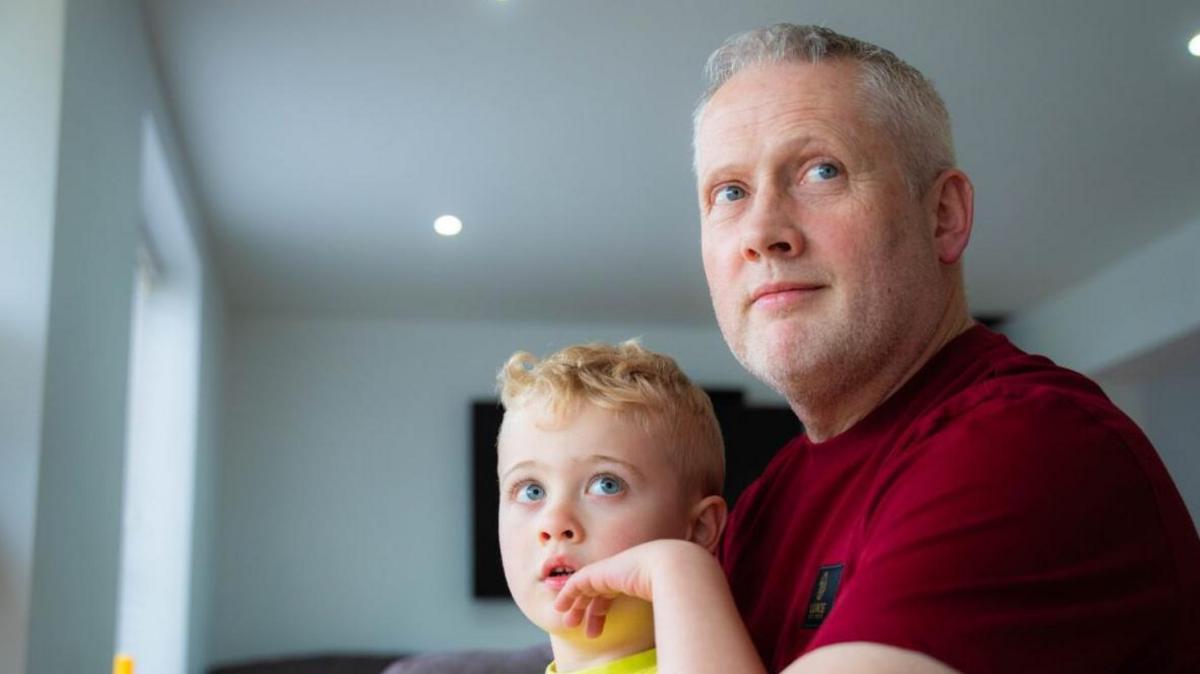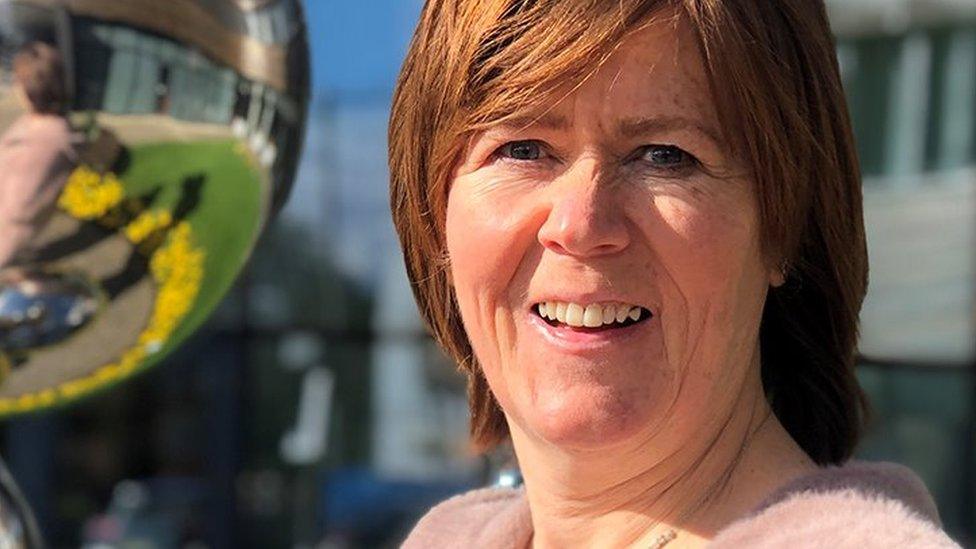Man left with broken neck after delayed cancer diagnosis

Simon is hoping new treatments will be developed that can help prolong his life
- Published
A man whose incurable blood cancer was undiagnosed in the early stages of the pandemic has been left with a broken neck.
Simon Cummings, from Siston, near the outskirts of Bristol, was diagnosed with myeloma in September 2020, nine months after first experiencing “a loss of strength” in his right arm.
By the time his cancer was diagnosed, the father-of-two had a broken neck and was told he was “2mm away from being paralysed”.
Simon is supporting blood cancer charity Myeloma UK’s campaign to raise awareness of the hidden impact of delayed diagnosis on patients’ quality of life.
Partner noticed changes
The first symptoms Simon noticed was having less strength.
“You go to the GP just feeling rubbish, not knowing why, and you don’t get any answers until something catastrophic happens like breaking a bone,” the 53-year-old IT specialist said.
"My other half had been noticing changes in me.
"I would look around aimlessly. She said I had a yellowing in my eye and skin sometimes but the GP dismissed it.”
Diagnosis 'not easy'
He does not blame medical experts for the delayed diagnosis.
"It’s not an easy disease to diagnose given the very generic symptoms early on," he said.
"I just took the positive that they’d caught it before it paralysed me - which was a distinct possibility."
Simon visited A&E and had various scans after experiencing pain in his arm that appeared to ease when he was jumping on a trampoline.

Simon has two young children
He was working in Cheltenham the following day when doctors urgently called him to the hospital.
"I was sat in the Cheltenham General Hospital and they immediately put a neck brace on," he said.
"I didn't have a clue what was going on."
Simon underwent urgent surgery to stabilise his neck.
What is myeloma?
“When the neurosurgeon came in after the surgery, he said: ‘You were 2mm away from being paralysed’.
"At that point they didn’t know what it was. They started doing scans to find out what had caused this.”
He was eventually diagnosed with a blood cancer called myeloma and received chemotherapy followed by a stem cell transplant.
Simon was told to wear a back brace for four months to help stabilise his spine.
According to Myeloma UK, myeloma is cancer of the plasma cells (the white blood cells) in the bone marrow and it affects about 24,000 people in the UK.
The charity says myeloma accounts for 2% of all cancers and some 3,000 people die from it in the UK each year.
Myeloma symptoms
"I've been told it's manageable, which is a relief.
"I am just trying to continue to live my life for my family," Simon said.
He is experiencing brain fog and disturbed sleep, as a result of the treatment he is having.
Despite being the third most common type of blood cancer, myeloma is frequently missed, because its symptoms, which can include back pain, easily broken bones and fatigue, are vague and often linked to general ageing or minor conditions.
The NHS says other common symptoms include pain in your bones, unexplained bruising or abnormal bleeding and repeated infections.
Half of myeloma patients wait more than five months to be diagnosed

Simon says he is determined to keep fighting the illness
“In the back of mind I’m thinking, there’s another new treatment; there are people out there working to keep me alive," he said.
"Having that advocacy from Myeloma UK, working tirelessly to get these treatments approved on the NHS is invaluable.
“I would like to think that I can use my experience to help other people either look at myeloma in a different way, or realise it’s not the be all and end all.
"There’s every chance it could kill you, but once you get over the initial shock that you’ve got the Big C, you find out there are all these treatments."
Treatment hopes
Sarah Secombes, head of public fundraising at the charity Myeloma UK, said: "When you have myeloma, every day counts.
"Far too many people like Simon have to deal with the knock-on effects of a late diagnosis.
"This can sadly include broken bones, kidney failure, and other life-changing complications.
"We’re determined to improve diagnosis and we’re already making huge leaps forward with our research and tools to help doctors and nurses spot myeloma earlier."
- Published14 August 2023

- Published26 June 2023
